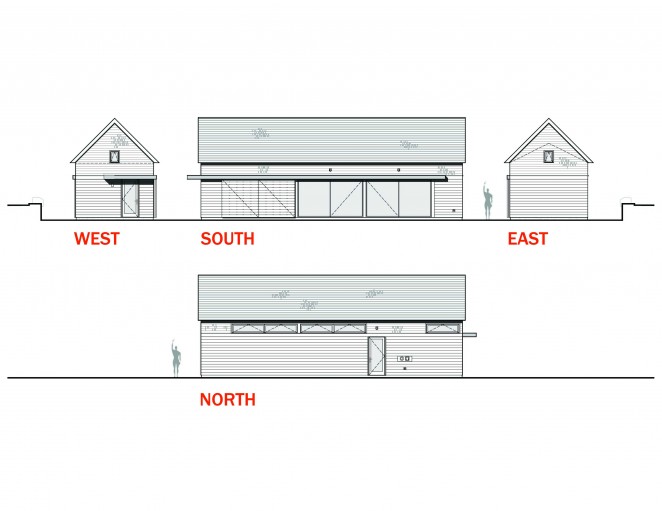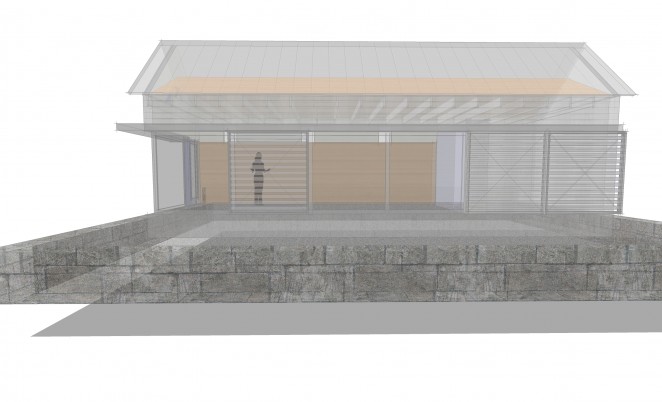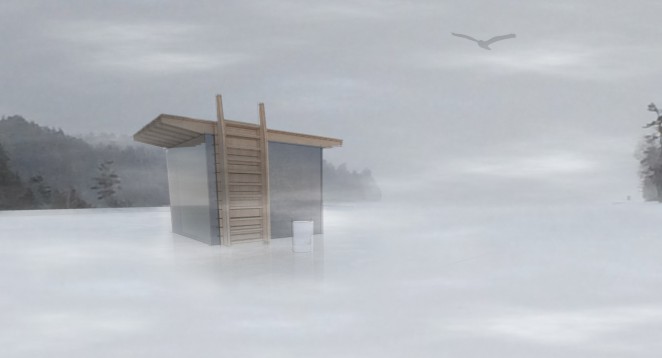This is the third in a mini-series I've created which chronicles the design process for small project I've been working on - the design of a modern Barn Studio outbuilding. In the first post I talk about how I developed the design concept and the second post describes the evolution of the elevations, which shapes the final appearance of the barn studio. I've recorded a video that discusses the material selection process for this small project.
Read on for the specifics not covered in the video.
Material Ideas
I can never seem to make enough room for material samples in my personal sample library. They take up more room than my physical book collection. For me, they offer inspiration and they speak to who I am as an architect. I’m driven by the process that turns these raw materials into a home. I love how they can speak about a client or a site - it’s part of the magic of architecture for me.
Selecting materials usually comes from a larger idea about the site, the place, or a specific building reference. For this project, the material inspiration comes from the barn typology. Barns were often frugal constructions clad in whatever materials were locally available to the farmer. Historically, local sawmills would mill the trees felled from a building site into rough lumber. This was used for both the timber frame structural system as well as the exterior sheathing. Wood sheathing was an obvious material choice for the side walls.
Walls
Knowing what material we'll be using is only one aspect to consider. Will the siding be horizontal boarding, vertical tongue and groove, clapboards, shingles? What's the finish? My client requested I consider board and batten in a vertical configuration - this was their image of what a barn was. It wasn't my first choice, but it's a perfectly reasonable and appropriate aesthetic. So that was the foundation for one of the three options. I usually propose at least three options for our discussions. The first is an expected option, usually based on a specific client request. The second is an option they may not have considered at all, something unexpected. The third is usually a hybrid that combines the two - a middle ground. This way we're sure we've explored a range of possibility. There's usually a fourth that comes out of my client's feedback that hybridizes these options in ways even I hadn't expected. I love this aspect of the process.
Back to the vertical board and batten. The reason I didn't like it? The vertical scale of the barn. It's much shorter than it is long. My preference, especially for small structures, is to reinforce whatever the dominant ordering proportion is with the siding. The barn's dominant scale is its horizontal scale, it's length.
To highlight the building's horizontality, I'm proposing a horizontal tongue and groove siding up to the seven foot level. This reinforces our earlier decision to go with a shorter seven foot door and canopy height to achieve a taller, more barn-like proportion. We're tricking the eye into thinking the building is taller than it is by creating this horizontal band with blank wall above it. Above this horizontal band would then be shingles to create a finer texture, smaller scale and let the upper portion of the structure recede - again this reinforces the scale shift we're looking to achieve.
Roof
For the roof, metal was another obvious choice - an appropriate agrarian reference, with a durable and clean aesthetic. To me it was a better choice than wood because it has a crisp, tailored look that fits with the tight, simple geometry of the outbuilding. However, the design review committee didn't agree. It was apparently deemed too industrial for the neighborhood. So, wood shingles was a next best option, and this reinforced the decision to use shingles in the zone above the seven foot level.
Doors, Windows, Hardware, Flat Roof
For the doors and windows, hardware, and flat roof canopy element - gray metal and stainless steel. Simple, durable, utilitarian and monochromatic.
Trim
I opted to minimize the trim on the structure completely eliminating the corner trim and keeping the other profiles as narrow as possible. The siding boards are mitered at the corners and the shingles are woven allowing the horizontal lines to continue uninterrupted along all faces of the building. Window trim is minimal at only two and one-half inches wide and it will be stained to match the gray of the shingles.
Color
All siding is left to weather naturally to a gray color. We may use a bleaching oil or weathering stain to control the process ensuring it weathers evenly, but the idea is to minimize any maintenance. Low maintenance is a hallmark of the barn typology.
Site Elements
The main house siding is partially clad in stone and the property has a number of dry-laid stone walls as well. It was the inspiration for the long dry-laid retaining wall to the north edge and it fits well with our neutral gray palette.
So this is the basic process by which I go about selecting the materials. It's informed by a number of factors but there's an overriding logic to the decisions. They're decisions made with intent to achieve certain effects. Decisions drawn not only from an idea about what a barn should be clad in, but also from the proportion and size of the building. We look to the architecture to help us make decisions about the right solution.
I hope you'll continue to follow the process as we move forward with the next steps designing the Barn Studio. We'll discuss lighting and the interior materials in a future post. If you’d like your very own Barn Studio it's available for download. And, there are a few other variations I'd gladly share if you're interested, just drop me a line and let me know.






























